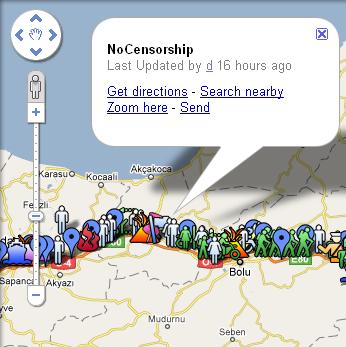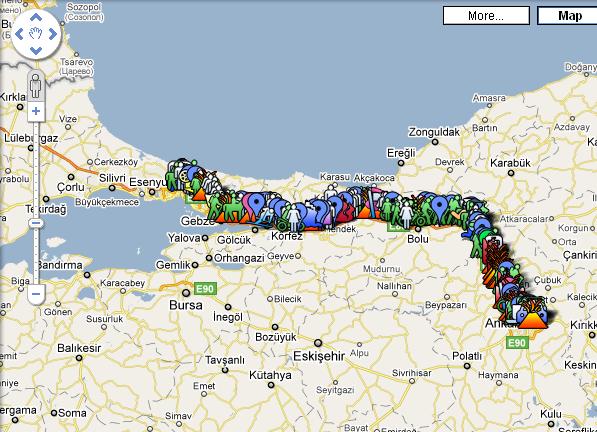virtual protest
The virtual protest against internet censorship is calling for participants from over the world to join them on google map.

Particiapate by mark yourself on Google map…
And they’ve come a long way…
Finally, you can join the protest here.



Hi Cheng,
I see that you haven’t uploaded your project-1 yet. Please do this soon. Below are the comments from the PiratePad from the crit presentation today:
————————————-
The placement of words seem to go slightly left of the middle a lot, and ignore the left side completely. -jon
you could do some overlap-testing on the words so they are easier to read, — but I see what you mean about the overlayed texture being interesting
what determines word placement on the visualisation?
I’d love to see the words in the first visualization move and fade out more fluidly. Also it would be great to be able to roll over a particular word and be able to read the whole statement or sentence that it came from.
you probably could’ve left out words like it, or the in your visualization…
Wow: really deep stuff here. There is something beautiful in the way that the words pop up and fade and in the anonymous ownership of the words. However, I agree with other people as well–it’s very difficult to understand what you’re portraying because of how you are visualizing your data. The random placement makes the whole scene difficult and cluttered (although, some of the final pictures you showed are aesthetically pleasing). Best suggestion: I think your data would be more interesting and moving if you included demographic filters (age, gender, location) and the *types of crimes* of the people who are to be executed.
Here’s my best visual suggestion: your collage with the white on black, use this and then when you mouse over a word display sentences which ontain the word you mouse over. I think someone else mentioned an idea kind of like this. I wish you could include the whole paragraphs, but I think you should at least include the words’ containing sentences. -Amanda
I’m not convinced you even want to abstract and average all of the individuals together. Can you create 500 mini-visualizations, one for each inmate, and some way of showing them separately (be it linearly or in parallel)? They just all feel so distinct from each other…and it’s the individuality that makes them interesting as opposed to the fact that they’re all from people who are about to die. -SB
It is really cool to see the words drop in but it’s a little hard to read when so many words are overlapping. You do lose the context when it’s just about the frequency of the words like this, and I’d love to see the context come back into it because that’s what makes this piece so powerful.
Maybe you could use a more sophisticated algorithm to pick out phrases of text instead of just words. This would help to remove the “mr”‘s and “ms”‘s etc.. and “[illegible]”
The movement of the text is a little choppy and the really large fonts look pixelated, which detracts from the aesthetic. Otherwise, its really interesting to see that some of the most frequent words have to do with the future–“hope”, “will”, etc. I also like the black and white better than any of the other color combinations…the more colorful ones don’t convey the weight of the subject.
First let me say that you’ve found an absolutely fantastic and profound data set. By all rights, we should be able to view this data to get insight into the landscape of how it feels just before one is executed. Unfortunately, the atomization of the text into the wordle-like display works against you. The speakers of these texts are minimally educated and use simple words; when they are exploded into a tag cloud, they look banal and simplistic — the real “content” is gone. For this reason I would recommend a different approach, in which you built an interactive browser for surfing/sorting/filtering the database of texts. You might benefit by using your own markup system, such as rating each clip by whether it was defiant/repentant, self-oriented/other-oriented, etcetera.